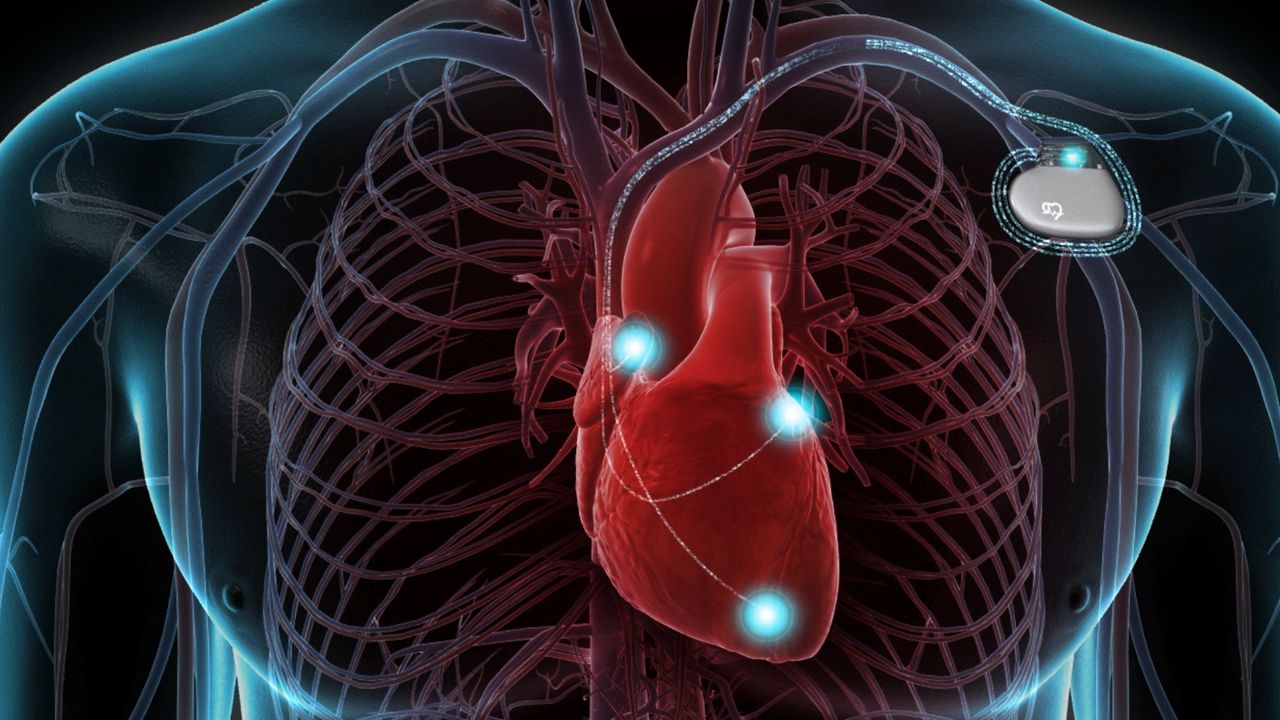
What is an Implantable Cardioverter-Defibrillator (ICD)? An Implantable Cardioverter-Defibrillator (ICD) is a small device placed inside the chest to monitor and correct irregular heartbeats. ICDs are lifesavers for people with severe heart conditions. They detect dangerous arrhythmias and deliver electric shocks to restore normal rhythm. These devices are crucial for preventing sudden cardiac arrest. ICDs can be programmed to respond to different types of heart issues, making them versatile tools in cardiac care. They continuously track heart activity, providing peace of mind for patients and their families. Understanding how ICDs work and their benefits can help those considering this life-saving technology.
What is an Implantable Cardioverter-Defibrillator (ICD)?
An Implantable Cardioverter-Defibrillator (ICD) is a small device placed inside the body to monitor and regulate heart rhythms. It can deliver electric shocks to correct abnormal heartbeats, potentially saving lives. Here are some fascinating facts about ICDs.
-
ICDs are life-saving devices designed to prevent sudden cardiac arrest, a condition where the heart suddenly stops beating effectively.
-
The first ICD was implanted in 1980. This groundbreaking procedure marked a significant advancement in cardiac care.
-
ICDs can treat both fast and slow heart rhythms. They can deliver shocks for fast rhythms and pacing for slow rhythms.
-
Modern ICDs are smaller than a deck of cards. Advances in technology have made these devices more compact and less intrusive.
-
ICDs have a battery life of 5 to 7 years. The longevity depends on how often the device needs to deliver therapy.
How Do ICDs Work?
Understanding the mechanics behind ICDs can help appreciate their importance. These devices continuously monitor the heart and take action when necessary.
-
ICDs monitor heart rhythms 24/7. They are always on alert for any irregularities.
-
When a dangerous rhythm is detected, the ICD can deliver a shock to restore normal rhythm.
-
ICDs can also act as pacemakers. They can send small electrical impulses to maintain a regular heartbeat.
-
The shock delivered by an ICD is strong but brief. It’s designed to reset the heart’s electrical system quickly.
-
Patients often describe the shock as a sudden jolt. While uncomfortable, it’s a small price to pay for life-saving intervention.
Who Needs an ICD?
Not everyone with heart issues requires an ICD. Specific conditions and risk factors make some individuals more suitable candidates.
-
People with a history of cardiac arrest are prime candidates for ICDs.
-
Those with severe heart failure may benefit from an ICD to prevent sudden death.
-
Individuals with inherited heart conditions like Long QT Syndrome often need ICDs.
-
Patients who have survived a heart attack but have significant heart damage might require an ICD.
-
Doctors use various tests like ECGs and stress tests to determine if an ICD is necessary.
Living with an ICD
Having an ICD implanted is a significant step, but it doesn’t mean life has to change drastically. Many people continue their daily activities with minimal adjustments.
-
Most people can return to normal activities after recovery from the implantation procedure.
-
Regular check-ups are essential to ensure the ICD is functioning correctly.
-
ICDs can be affected by strong electromagnetic fields. Patients should avoid certain machinery and medical procedures.
-
Traveling with an ICD is generally safe. However, carrying an ICD identification card is recommended.
-
Physical activity is usually encouraged. Exercise can help maintain heart health, but it’s important to follow a doctor’s advice.
Technological Advancements in ICDs
The field of ICD technology is continually evolving, making these devices more effective and user-friendly.
-
Remote monitoring is now possible. Patients can have their ICDs checked without visiting the doctor’s office.
-
Some ICDs are MRI-compatible. This advancement allows patients to undergo MRI scans safely.
-
ICDs can store data about heart rhythms and shocks delivered, which helps doctors make informed decisions.
-
Battery technology has improved. Newer ICDs have longer battery lives, reducing the frequency of replacements.
-
Future ICDs may be even smaller and smarter. Research is ongoing to make these devices more efficient and less intrusive.
The Heartbeat of the Matter
ICDs are life-saving devices that can make a huge difference for those with heart conditions. These small gadgets monitor heart rhythms and deliver shocks when needed, preventing sudden cardiac arrest. They’re like having a guardian angel for your heart, always on duty.
Knowing the facts about ICDs can help you understand their importance and how they work. From their history to how they’re implanted, each detail plays a role in their effectiveness. Whether you or a loved one might need one, being informed is key.
Remember, always consult with a healthcare professional for personalized advice. ICDs are more than just medical devices; they’re lifelines that offer peace of mind and a second chance at life. Stay informed, stay healthy, and keep your heart in check.
Was this page helpful?
Our commitment to delivering trustworthy and engaging content is at the heart of what we do. Each fact on our site is contributed by real users like you, bringing a wealth of diverse insights and information. To ensure the highest standards of accuracy and reliability, our dedicated editors meticulously review each submission. This process guarantees that the facts we share are not only fascinating but also credible. Trust in our commitment to quality and authenticity as you explore and learn with us.
